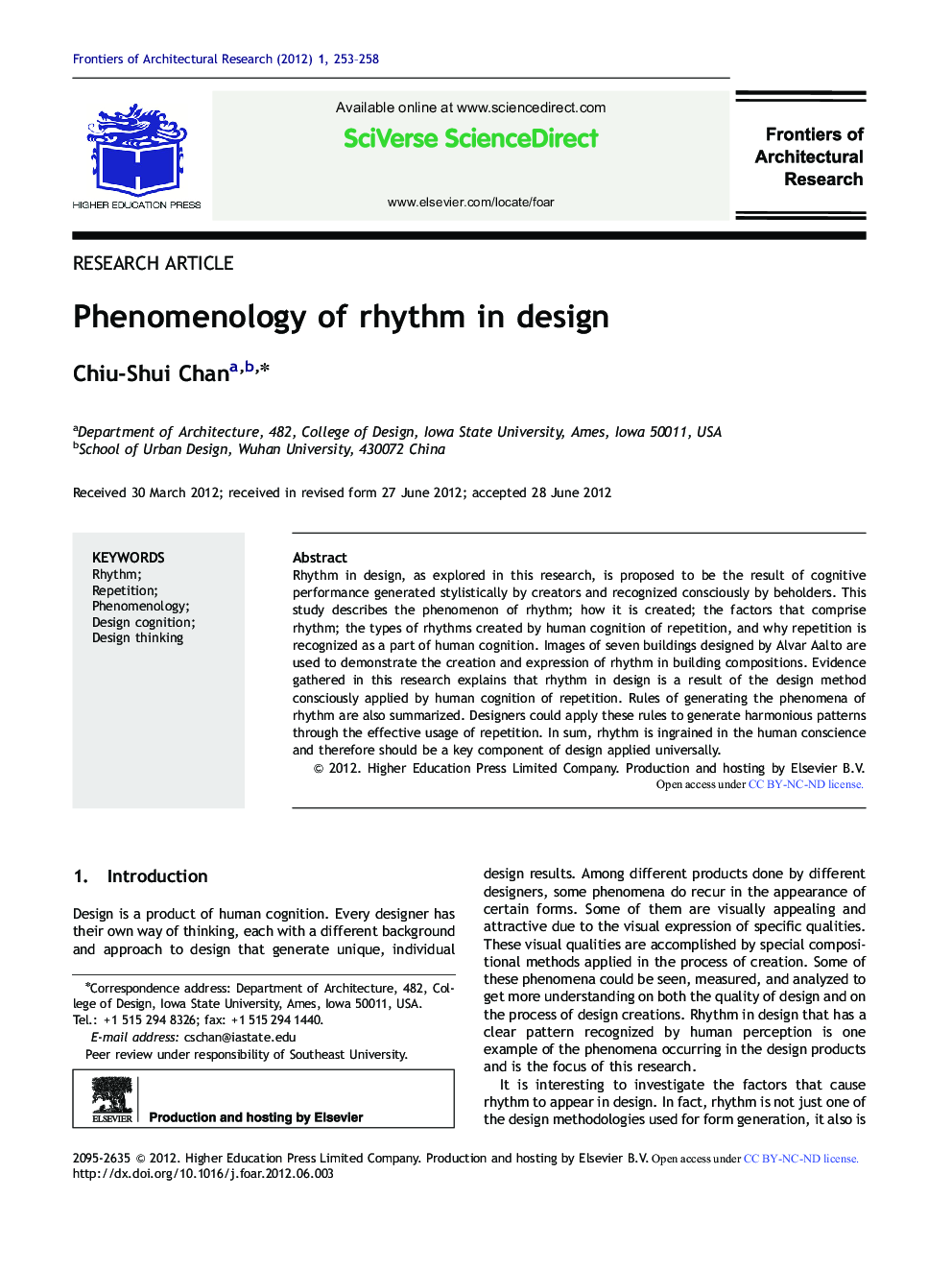| Article ID | Journal | Published Year | Pages | File Type |
|---|---|---|---|---|
| 270722 | Frontiers of Architectural Research | 2012 | 6 Pages |
Rhythm in design, as explored in this research, is proposed to be the result of cognitive performance generated stylistically by creators and recognized consciously by beholders. This study describes the phenomenon of rhythm; how it is created; the factors that comprise rhythm; the types of rhythms created by human cognition of repetition, and why repetition is recognized as a part of human cognition. Images of seven buildings designed by Alvar Aalto are used to demonstrate the creation and expression of rhythm in building compositions. Evidence gathered in this research explains that rhythm in design is a result of the design method consciously applied by human cognition of repetition. Rules of generating the phenomena of rhythm are also summarized. Designers could apply these rules to generate harmonious patterns through the effective usage of repetition. In sum, rhythm is ingrained in the human conscience and therefore should be a key component of design applied universally.
